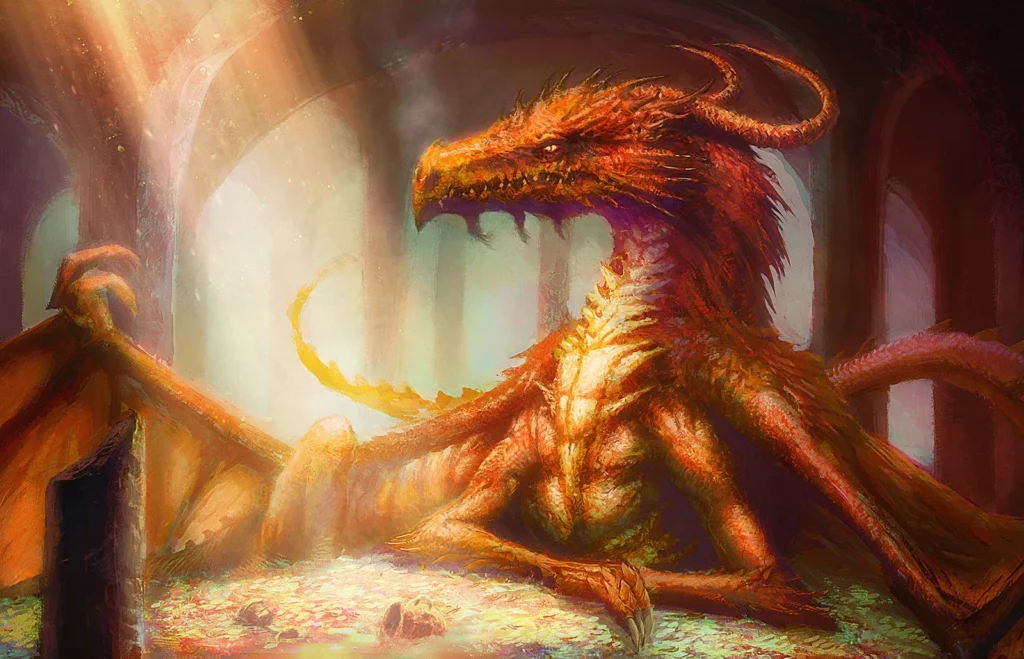Introduction
J.R.R. Tolkien’s “The Hobbit” has captured the imaginations of readers for generations with its enchanting world of Middle-earth and its captivating characters. One of the most iconic figures in the story is Smaug, the fearsome dragon who hoards the treasure of the Lonely Mountain. When Peter Jackson brought “The Hobbit” to the big screen in a trilogy of films, fans were eager to see how Smaug would be portrayed. In this article, we will compare Smaug as depicted in the original book to his cinematic counterpart in the film adaptation.
Smaug in the Book
In Tolkien’s novel “The Hobbit,” Smaug is a creature of immense power and malevolence. He is a dragon of the utmost cunning, intelligence, and arrogance. Described as “a most specially greedy, strong, and wicked worm,” Smaug possesses a unique personality that is as much a part of his character as his formidable physical presence.
- Descriptive Detail: Tolkien’s writing is rich in detail, and his portrayal of Smaug reflects this. The author goes to great lengths to describe the dragon’s physical appearance, such as his scales, eyes, and fiery breath. Readers are left with a vivid mental image of Smaug as a monstrous and terrifying creature.
- Character Development: Although Smaug does not have extensive dialogue or screen time in the book, Tolkien infuses his character with depth and complexity. Smaug’s conversations with Bilbo Baggins reveal his pride, cunning, and arrogance, making him a truly memorable antagonist.
- Enigmatic Presence: Smaug remains largely unseen for the majority of the novel, building anticipation and tension throughout the story. This enigmatic quality contributes to his aura of fear and mystery.

Smaug in the Film
Peter Jackson’s film adaptation of “The Hobbit” provided an opportunity to bring Smaug to life on the big screen, and it did not disappoint. Here’s how the cinematic Smaug compares to his literary counterpart:
- Visual Spectacle: The film’s portrayal of Smaug is a visual masterpiece. The attention to detail in the dragon’s design and animation is stunning. Smaug’s gold-covered lair and the shimmering scales that adorn his body are nothing short of cinematic magic.
- Enhanced Screen Time: While Smaug’s appearances in the book are relatively brief, the film expands his role, giving him more screen time and dialogue. This allows for a deeper exploration of his character and motivations.
- Benedict Cumberbatch’s Performance: Benedict Cumberbatch’s voice performance as Smaug is exceptional. His deep, resonant voice adds gravitas to the character, and his delivery of Smaug’s cunning and arrogance is captivating.
- Action Sequences: The film adaptation includes thrilling action sequences involving Smaug, particularly the dramatic confrontation between the dragon and the dwarves in Erebor. These sequences add excitement and spectacle to the story.

Conclusion
Smaug is an iconic character in both J.R.R. Tolkien’s “The Hobbit” and Peter Jackson’s film adaptation. While the book provides readers with a richly descriptive and enigmatic portrayal of the dragon, the film brings Smaug to life with breathtaking visuals and an expanded role. Benedict Cumberbatch’s performance adds depth to the character, making him even more memorable. Ultimately, Smaug’s presence in both the book and the film is a testament to the enduring power of Tolkien’s storytelling and the creative vision of Peter Jackson’s cinematic adaptation. Whether on the page or on the screen, Smaug remains a legendary figure in the world of fantasy literature and film.

